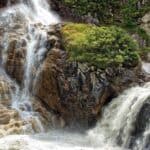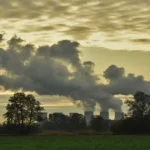The importance of wetland preservation cannot be overstated; these vital ecosystems support biodiversity, regulate climate, and provide invaluable ecological services. They play a crucial role in maintaining our planet’s delicate balance. Wetland preservation is essential to safeguarding our environment and the creatures that call it home.
Imagine a place where water meets land, creating a unique habitat for a variety of plants, animals, and insects. Wetlands act like natural sponges, soaking up excess water during storms and releasing it slowly, reducing the risk of floods.
They also filter pollutants, purifying the water that flows through them. But these valuable ecosystems are under threat from human activities like urban development and pollution.
Understanding Wetlands
Wetlands are unique ecosystems where water and land meet, creating a dynamic environment that supports diverse plant and animal life. They come in various forms, such as marshes, swamps, and bogs, each with its own distinct characteristics.
Marshes: Marshes are characterized by their soft, wet ground and are often found along coastlines or near rivers and lakes.
Swamps: Swamps, on the other hand, have trees and shrubs growing in waterlogged soil, creating a dense and lush habitat.
Bogs: Bogs, with their acidic and nutrient-poor soil, are home to specialized plants like sphagnum moss and carnivorous pitcher plants.
The preservation of wetlands is crucial for several reasons. Firstly, wetlands act as natural buffers against floods, absorbing excess water during heavy rainfall and reducing the risk of inundation in nearby areas.
Secondly, wetlands play a vital role in filtering pollutants and purifying water, making them essential for maintaining water quality.
Besides, wetlands provide habitat for a wide variety of plant and animal species, including many endangered and threatened species.
By preserving wetlands, we can ensure the continued health of these ecosystems and the countless benefits they provide to both humans and wildlife.
Importance of Wetland Preservation
Wetlands are vital ecosystems and their conservation is vital as they play several important roles:
Biodiversity Hotspots: Wetlands are biodiversity hotspots, harboring a rich variety of plant and animal species. These unique ecosystems provide habitat for numerous creatures, from migratory birds to amphibians and aquatic plants.
Preserving wetlands ensures the survival of these diverse species and helps maintain the balance of our planet’s ecosystems.
Climate Regulation: Wetlands play a crucial role in regulating the Earth’s climate. They act as carbon sinks, storing large amounts of carbon dioxide and helping mitigate the effects of climate change.
Additionally, wetlands moderate temperatures by providing evaporative cooling and influencing local weather patterns. By preserving wetlands, we can help combat climate change and protect our planet’s delicate climate balance.
Flood Control: Wetlands are natural flood control systems, absorbing excess water during heavy rainfall and reducing the risk of floods in nearby areas.
Their ability to store and slowly release water helps mitigate the impact of natural disasters and protects communities from flooding and water-related damage.
Water Purification: Wetlands act as natural filters, purifying water by trapping sediments and removing pollutants. They improve water quality by reducing the levels of nutrients, pesticides, and other contaminants.
Preserving wetlands is essential for ensuring clean and healthy water supplies for both humans and wildlife.
Cultural Significance: Wetlands hold cultural and recreational value for communities around the world. They provide opportunities for fishing, boating, birdwatching, and other outdoor activities.
Also, wetlands are often integral to indigenous cultures and hold spiritual significance for many people.
By conserving wetlands, we can protect these valuable cultural resources and ensure that future generations can enjoy their beauty and benefits.
Wetland Areas in India
Overview of Wetland Ecosystems in India: India is blessed with diverse wetland ecosystems, ranging from coastal mangroves to inland marshes and lakes.
These ecosystems play a vital role in supporting both terrestrial and aquatic life, contributing to the country’s ecological richness and biodiversity.
Key Wetland Areas in India
Sundarbans: The Sundarbans, located in the delta region of the Ganges-Brahmaputra-Meghna rivers, is the largest mangrove forest in the world. It is home to a unique ecosystem with rich biodiversity, including the iconic Royal Bengal tiger.
Chilika Lake: Chilika Lake, situated in the state of Odisha, is the largest coastal lagoon in India and the second-largest in the world. It serves as a crucial habitat for migratory birds, including endangered species like the Irrawaddy dolphin.
Keoladeo National Park: Formerly known as Bharatpur Bird Sanctuary, Keoladeo National Park in Rajasthan is a UNESCO World Heritage Site renowned for its avian diversity. It attracts thousands of migratory birds during the winter months, making it a paradise for birdwatchers.
Also Read: Preserving Our Planet: Ecology and Environment Conservation
Importance of Indian Wetlands
Indian wetlands are invaluable for biodiversity conservation, providing habitat for a wide range of plant and animal species, many of which are endangered or threatened.
They also support local livelihoods through fishing, agriculture, and tourism, contributing to the socio-economic well-being of communities.
Besides, Indian wetlands provide essential ecosystem services such as water purification, flood control, and climate regulation, highlighting their significance for both humans and the environment.
Preserving these wetlands is crucial for maintaining ecological balance and ensuring the sustainable development of India’s natural resources.
Wetlands Conservation Act in India
The Wetlands Conservation Act in India is a legislative framework aimed at protecting and conserving the country’s wetland ecosystems.
Enacted in 1982, this act recognizes the importance of wetlands for biodiversity conservation, water resource management, and climate change mitigation.
Objectives and Provisions of the Act:
- Identification and delineation of wetlands based on ecological significance.
- Regulation of activities within wetland areas to prevent degradation and loss of biodiversity.
- Promotion of sustainable management practices to ensure the long-term health of wetland ecosystems.
- Establishment of wetland conservation authorities at the state and national levels to oversee implementation and enforcement.
Role of Government Agencies and Stakeholders in Wetland Conservation
Government agencies, such as the Ministry of Environment, Forest and Climate Change, and State Forest Departments, play a crucial role in implementing the Wetlands Conservation Act.
They are responsible for identifying and designating wetland areas, enforcing regulations, and monitoring compliance. Additionally, non-governmental organizations (NGOs), research institutions, and local communities are important stakeholders in wetland conservation efforts.
Their involvement in awareness campaigns, research projects, and community-based conservation initiatives contributes to the success of wetland preservation endeavours.
Collaborative efforts between government agencies, stakeholders, and communities are essential for effectively conserving India’s valuable wetland ecosystems.
Challenges and Threats to Wetland Preservation
Several challenges and threats are in the way of conservation of wetlands
Urbanization and Habitat Loss
Rapid urbanization poses a significant threat to wetland ecosystems, as expanding cities encroach upon these vital habitats. Wetlands are often drained, filled, or converted for urban development projects, leading to habitat loss and fragmentation.
This urban expansion not only destroys valuable wildlife habitats but also disrupts ecological processes essential for wetland health.
Pollution
Pollution from various sources, including industrial runoff, agricultural chemicals, and urban waste, poses a serious threat to wetland ecosystems.
Contaminants such as pesticides, heavy metals, and nutrients can degrade water quality, harm aquatic life, and disrupt fragile wetland ecosystems.
Pollution also affects the ability of wetlands to provide essential ecosystem services, such as water purification and flood control, further exacerbating the degradation of these vital habitats.
Invasive Species
The introduction of invasive species poses a significant challenge to wetland preservation efforts. Invasive plants and animals outcompete native species, disrupt food chains, and alter ecosystem dynamics.
These invasive species can rapidly spread throughout wetland ecosystems, displacing native flora and fauna and reducing biodiversity.
Controlling and managing invasive species is crucial for maintaining the ecological integrity of wetland habitats and protecting native biodiversity.
Climate Change
Climate change poses a multifaceted threat to wetland ecosystems, exacerbating existing challenges and introducing new risks.
Rising temperatures, altered precipitation patterns, and sea-level rise can directly impact wetland habitats, leading to changes in water levels, salinity, and species distribution.
Additionally, climate change increases the frequency and intensity of extreme weather events, such as storms and floods, which can cause habitat destruction and further degrade wetland ecosystems.
Addressing the impacts of climate change is essential for the long-term preservation of wetland habitats and the species that depend on them.
Conservation Efforts and Initiatives
Restoration and conservation of wetlands can be achieved through many ways:
Community-Based Conservation
Involving local communities in wetland conservation efforts is crucial for their long-term success.
Local communities often have valuable traditional knowledge about wetland ecosystems and can provide valuable insights into conservation strategies that are both effective and culturally sensitive.
By engaging communities in conservation initiatives, stakeholders can build a sense of ownership and stewardship over wetland resources, leading to more sustainable management practices and greater support for conservation efforts.
International Collaborations
Collaborative efforts between nations are essential for addressing the transboundary nature of wetland conservation.
Many wetland ecosystems span multiple countries, making coordinated conservation efforts necessary to ensure their protection.
International collaborations facilitate the sharing of scientific research, best practices, and resources, allowing countries to work together to address common challenges and achieve shared conservation goals.
Organizations such as the Ramsar Convention on Wetlands play a crucial role in fostering international cooperation and promoting the conservation and wise use of wetland ecosystems worldwide.
Restoration Projects
Wetland restoration projects offer hope for the rejuvenation of degraded wetland ecosystems and the recovery of lost biodiversity.
These projects involve restoring wetland habitats to their natural state through measures such as reforestation, habitat enhancement, and pollution remediation.
Successful wetland restoration initiatives demonstrate the potential for ecosystems to recover and thrive when given the opportunity.
By showcasing these projects, conservationists can inspire others to take action and invest in the restoration and conservation of wetland ecosystems for the benefit of both people and nature.
Conclusion
The preservation of wetlands is paramount for safeguarding biodiversity, regulating climate, and promoting human well-being.
These vital ecosystems support a rich diversity of plant and animal species, providing essential habitat and food sources for countless organisms.
Additionally, wetlands play a crucial role in regulating the Earth’s climate by storing carbon dioxide and moderating temperatures.
Besides, wetlands offer numerous benefits to human communities, including flood control, water purification, and recreational opportunities.
As stewards of the environment, it is incumbent upon us to support wetland conservation efforts and take action to protect these invaluable ecosystems.
By advocating for policies that prioritize wetland preservation, participating in restoration projects, and promoting awareness of wetland conservation issues, we can make a positive impact on the health and resilience of wetland ecosystems.






